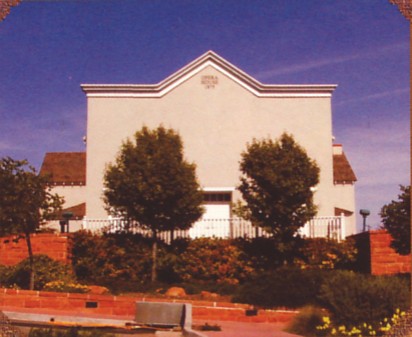
WASHINGTON COUNTY HISTORICAL SOCIETY (Washington County, Utah)
ST. GEORGE OPERA HOUSE & SOCIAL HALL
St. George, Utah
LOCATION
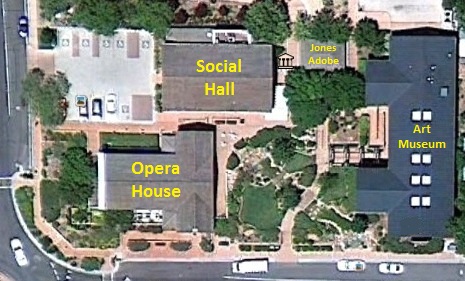
Northeast corner of Main Street & 200 North
212 N. Main Street (Main at Diagonal Street and 200 North)
St. George, UT 84770
37° 6' 42.5" North Latitude, 113° 34' 58.3" West Longitude
2,809 feet MSL
HISTORY
The original structure or the cellar of this building was used as the wine storehouse (1865) for the LDS Church's sacramental offerings. By 1880, the building was completed with a large addition to the west, creating the traditional T-shaped theatrical design.It was first known as the Social Hall, taking over functions of the old Social Hall down on Main Street. This community-centered building held a variety of social events including dances, theatrical performances, musicals, public meetings, and classes. By the turn of the century, operettas became quite popular and the name of the building evolved to the St. George Opera House.
Theatrical productions and occasional musicals included:
H.M.S. Pinafore (1886,1889)
Rob Roy McGregor (1891)
Under the Palms (1891)
Queen Esther (1891)
Children of Israel Wandering About in Egypt (1891)
Woodward School musicals such as "The Merry Milkmaids", "Priscilla", and "Olivette" were performed there between 1906 and 1908.
The new Dixie Stake Academy (later Dixie College) staged performances in the Opera House from 1911 to about 1927.
In 1930, the Opera House was sold to the Utah-Idaho Sugar Company for use as a sugar beet seed factory.
The St. George Social Hall (Opera House) was put on the National Register of Historic Places (#1991000360) on April 3, 1991.
The St. George Social Hall & Opera House was restored and became part of the Pioneer Center for the Arts, completed in 1996.
Commentary by Mary Phoenix:
The St. George Social Hall or Opera House was constructed in 1875, not quite fourteeen years after the pioneers first entered the St. George valley.
Joseph Smith taught that "man is that he might have joy", and Smith's followers interpreted this "joy" to be participation in and enjoyment of the cultural arts, and this they did assiduously. The first drama was presented locally in a bowery made of tumble weeds just nine months after the city's birth.
On the northeast corner of Main street where it bisects Diagonal, there was a wine celler used to store Dixie wine which was turned in as tithing. The Builders' Union constructed a theater over the wine cellar, using it as a stage. The completed building, which seated four hundred people, had a large stage, commodious dressing rooms, excellent acoustics, an orchestra pit, and real scenery bought from a bankrupt New York opera company.
The crowning glory of the building was its mechanized floor which could be raised to a sloping position so that the occupants of every seat could have an unobstructed view of the stage, or the floor could be lowered for dances.
For fifty years it was the center of social and cultural life in the Cotton Mission. At the present time, the City of St, George is renovating and restoring the building.
Local people like to remember the night the theater had a production of what must have been a homemade version of East Lynne. In the final scene, the poor sick wife crept to the doorstep begging her adamant husband to let her see her children "ere I die".
Emotions in the audience were running high and sobbing was audible, but it was a miner from Silver Reef who took matters into his own hands. Rumor has it that he had stopped in Leeds to partake liberally of sacramental wine, but he could stand no more so he arose, took out his trusty six-shooter and bawled out, "You let her see them kids or I'll blow your 'blankety-blank' head off!"
His friends were not quick enough to stop the shot, but they diverted his aim. The bullet hole remains in the ceiling until this day, a testimony to how seriously pioneer Dixie took its drama.
PHOTOS
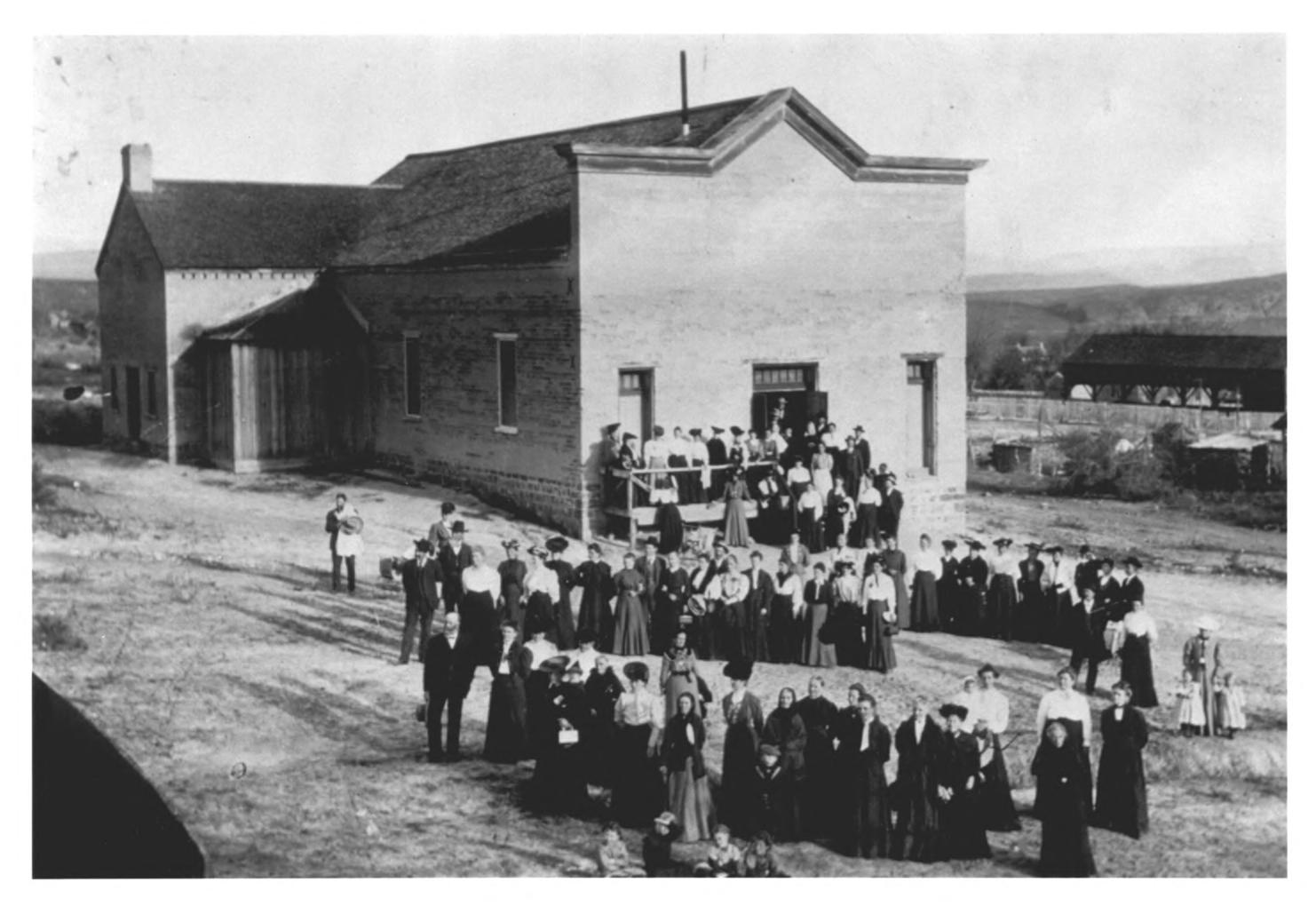
North and west sides of the building (around 1890)
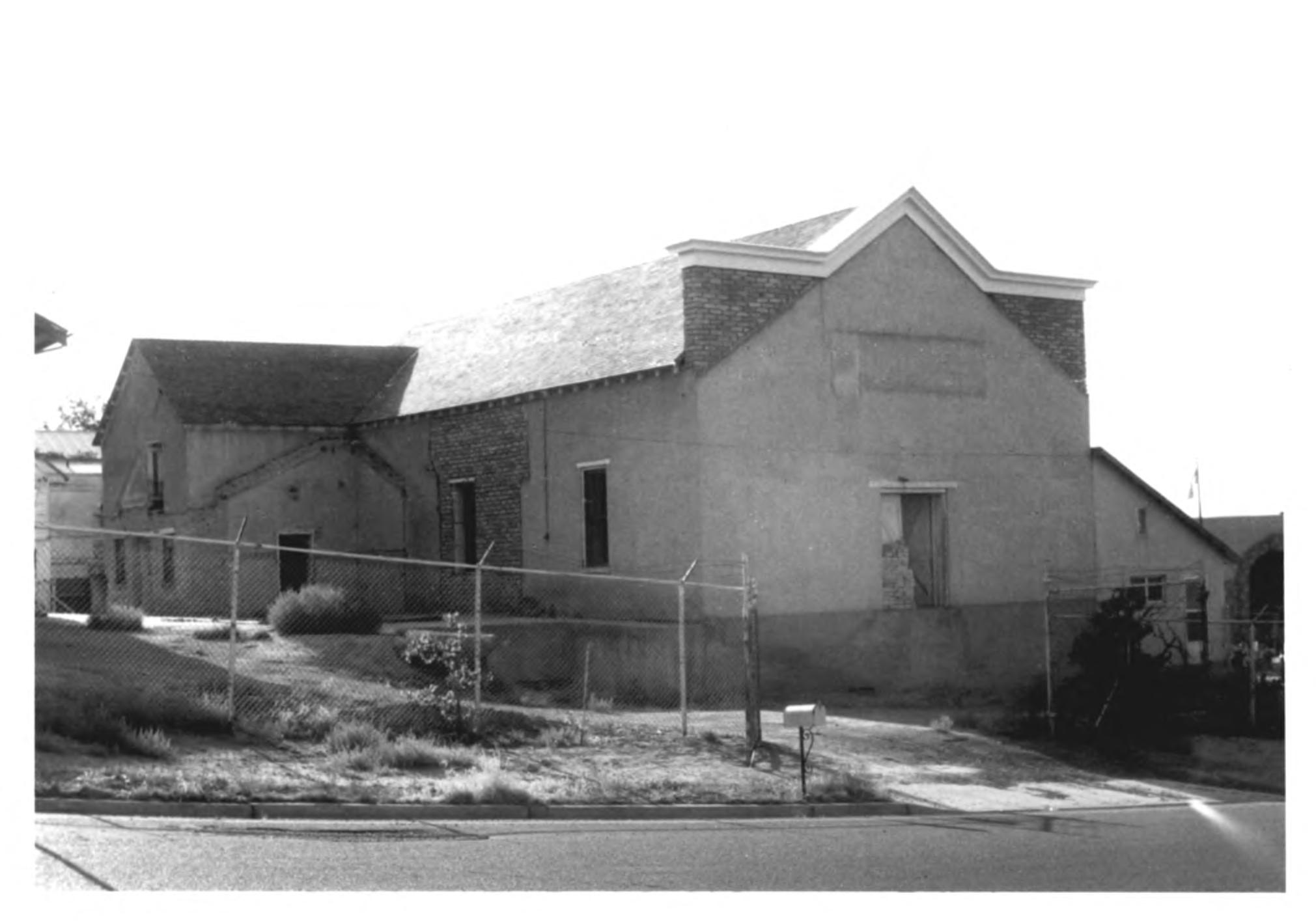 North and west sides of the building (Roger Roper, 1990) |
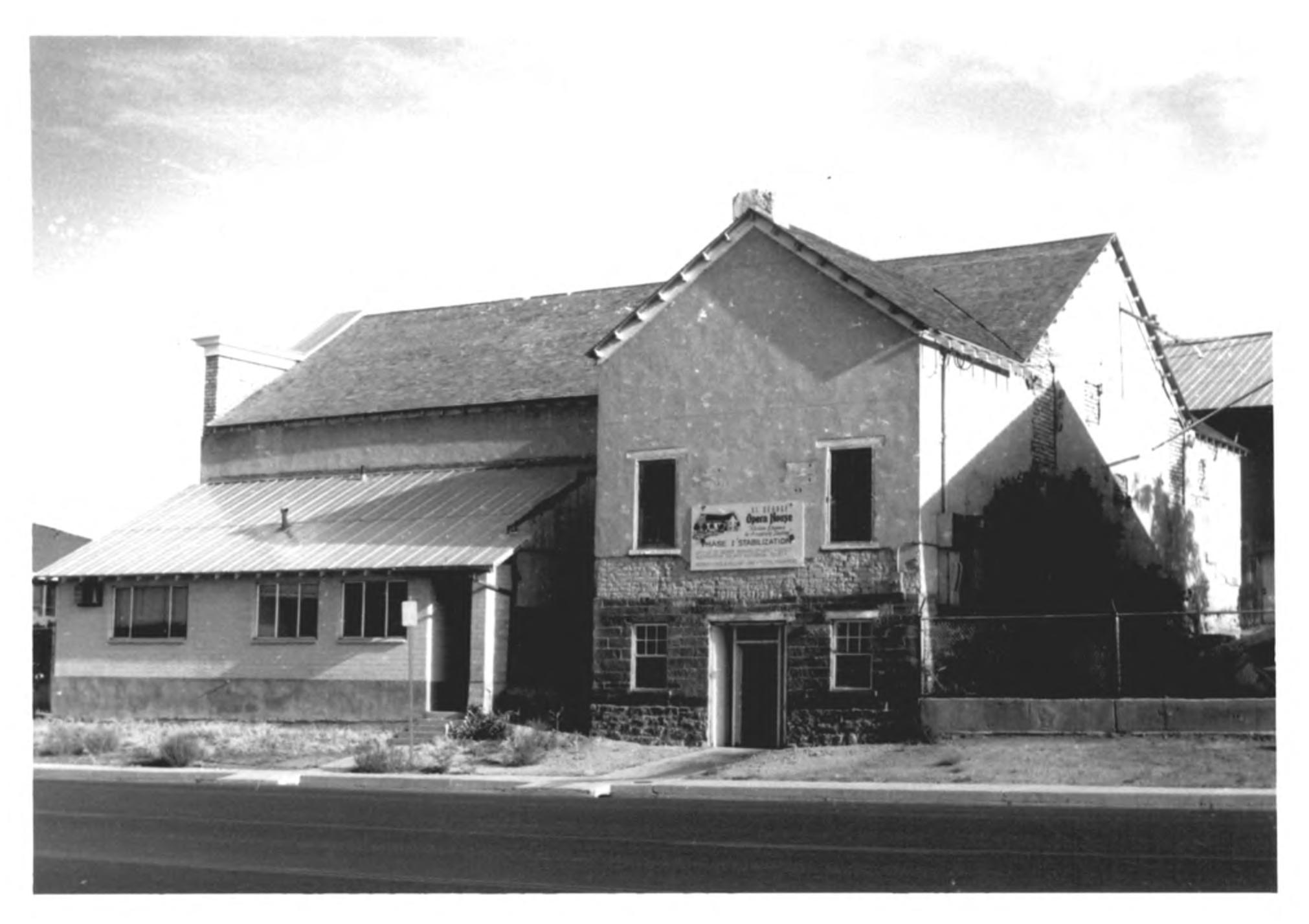 South and east sides of the building (Roger Roper, 1990) |

|
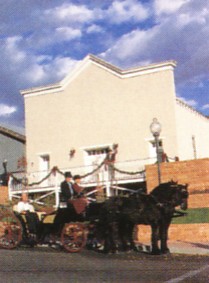
|
WCHS photos:
WCHS-00568 Jon Bowcutt sketch of the St. George Social Hall or Opera House
Other photos on the web:
St. George Opera House
Photos from the National Register of Historic Places nomination form
REFERENCES
St. George Opera HouseNational Register of Historic Places, Inventory - Nomination Form
Historical Buildings of Washington County (Volume 2), pp. 28-29.
Landmark and Historic Sites: City of St. George
First Edition, January 2, 2009, pp. 23-1 through 23-7
Compiled by the St. George Community Development Department
Landmark and Historic Sites: Informational Guide of Historical Sites within the City of St. George
Second Edition, Revised 2011, pp. 21-22
Compiled by the St. George Community Development Department Loren Webb, "Social hall to beet seed plant, and back again"
St. George Magazine, 1997.
Susan Crook, " Opera House stars during historic buildings tour in Dixie's downtown"
St. George Spectrum, 1/5/2012, Page C04